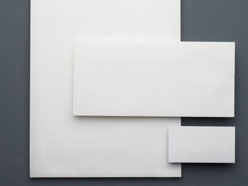
It’s important to use stationery—letterhead, envelopes and business cards—that support your image.
Why you need it
Despite the prevalence and preference for electronic communications and marketing, you can still make a huge impact with a business card or handwritten note. So create a strong first impression with a clean and substantial look, says Peter Richardson of Meade Graphics in Markham, Ont.
Read: Don’t skimp on branding
How it helps
Your stationery alone may not drive business, but it reinforces your brand. Beyond your design and logo, the weight and crispness of the stationery sends a message.
Jason Cumbers, who owns Print 1 in Regina, Sask., likens your letterhead to the clothes you wear when greeting clients. “It should have some class.”
Cheap and flimsy paper stocks—like the sheets most people churn out of their home computers—can make people wonder about your attention to quality in other areas, adds Jim Isman, a partner at Hillside Printing in Victoria, B.C.
Read: Put your name on the street
Good to know
The information on your stationery—name, title, address—should be legible at first glance.
For business cards, front and centre near the logo is best, says Aaron Green, production manager at Kwik Kopy in Halifax. For letterhead, there are no set rules on placement. But too many fonts, sizes and colours create clutter. And your letterhead design must leave enough room for actual business correspondence.
Fonts are a matter of taste, but for clarity Richardson favours Verdana, as well as Arial and Calibri. Green prefers using Garamond, Rockwell, Frutiger, Neue Helvetica, Gill Sans, Avenir or Myriad.
It’s best to buy in person. That way you can feel the paper’s weight, weave and grain, and assess the colour. If the raw sample isn’t attractive, your printed version won’t be any better.
Quality letterhead is 24- or 28-pound weight (meaning that 1,000 sheets of standard letter stock actually weighs 24 or 28 pounds), says Richardson. Green says textured papers add flair, and can often be found in off-white and other shades. Business cards can be on heavier uncoated or gloss stock, but can also use cover-weight linens to match the letterhead.
Read: No really, what is your brand?
Who can help
Anyone with graphic design ability and a photocopier can say they run a printing company. You want an operation with presses that consistently cut cards with the logo and text perfectly aligned each time. These companies are usually called printers, not copy shops, and have more production options, such as four-colour presses and the ability to run heavier papers.